The Calendulas are making such a brilliant display in my garden, I thought that they deserved a story of their own.  The Calendula Officinalis or Pot Marigold was named the Herb of the Year for 2008 by the National Herb Association. Since the Calendula was their chosen herb there must have been a good reason. I therefore planted my first calendula seeds in late September of last year.
The Calendula is an amazingly versatile herb. It is known for both its medicinal and culinary properties.The Calendula is an antiseptic, an anti-bacterial and an anti-fungal. The dried flowers are commonly used in creams, gels and salves for the healing properties on skin ailments. A poultice of the flowers is an excellent first aid remedy for burns, scalds and stings, and the sap has a reputation for removing warts, corns and callouses.
The culinary uses are just as impressive. Kathy Brown's delightful book, Edible Flowers, an A to Z Pictorial Directory of Culinary Flora, provides us with further insight into the historical uses of the herb. Kathy states, "In colonial times this hardy annual was called Pot Marigold because of its use as a cooked vegetable. It was dried in large quantities to flavor soups and stews throughout the winter months. The petals have a light, tangy or peppery flavor and are packed with rich color." She also suggests using fresh petals in salads, pasta, omelets, hard boiled eggs and baked potatoes.
My search for an appetizing recipe in which to incorporate my own garden's bounty lead me to Jim Long, the Heirloom Herbalist. On his website he lists several recipes from author and past President of the Garden Writers Association , Cathy Wilkinson Barash.
Knowing that my family had never experienced flowers in their food, I choose one of her more harmless, yet savory recipes. The Calendula Cheese Ball. We served it at our Mothers Day dinner. I'm pretty sure everyone liked it!
The Calendula Officinalis or Pot Marigold was named the Herb of the Year for 2008 by the National Herb Association. Since the Calendula was their chosen herb there must have been a good reason. I therefore planted my first calendula seeds in late September of last year.
The Calendula is an amazingly versatile herb. It is known for both its medicinal and culinary properties.The Calendula is an antiseptic, an anti-bacterial and an anti-fungal. The dried flowers are commonly used in creams, gels and salves for the healing properties on skin ailments. A poultice of the flowers is an excellent first aid remedy for burns, scalds and stings, and the sap has a reputation for removing warts, corns and callouses.
The culinary uses are just as impressive. Kathy Brown's delightful book, Edible Flowers, an A to Z Pictorial Directory of Culinary Flora, provides us with further insight into the historical uses of the herb. Kathy states, "In colonial times this hardy annual was called Pot Marigold because of its use as a cooked vegetable. It was dried in large quantities to flavor soups and stews throughout the winter months. The petals have a light, tangy or peppery flavor and are packed with rich color." She also suggests using fresh petals in salads, pasta, omelets, hard boiled eggs and baked potatoes.
My search for an appetizing recipe in which to incorporate my own garden's bounty lead me to Jim Long, the Heirloom Herbalist. On his website he lists several recipes from author and past President of the Garden Writers Association , Cathy Wilkinson Barash.
Knowing that my family had never experienced flowers in their food, I choose one of her more harmless, yet savory recipes. The Calendula Cheese Ball. We served it at our Mothers Day dinner. I'm pretty sure everyone liked it!
 Calendulas are easy to grow. Sew seeds in early spring or late summer. As with most annuals ,the more you snip or deadhead, the more blooms your plant will produce. If you'd like to collect petals for drying or prefer to let your flowers self-sew however, leave a few blooms to whither and die. I am always amazed at the number of seeds that come from a single flower head. Expect "volunteers" to pop up in unexpected locations next year. My feeling is, if a seed finds a perfect spot to take root, it is more than welcome to stay.
Calendulas are easy to grow. Sew seeds in early spring or late summer. As with most annuals ,the more you snip or deadhead, the more blooms your plant will produce. If you'd like to collect petals for drying or prefer to let your flowers self-sew however, leave a few blooms to whither and die. I am always amazed at the number of seeds that come from a single flower head. Expect "volunteers" to pop up in unexpected locations next year. My feeling is, if a seed finds a perfect spot to take root, it is more than welcome to stay.  The Calendulas in my garden are now 2 feet tall. The summer sun will soon be too hot for them to linger much longer. I am truly enjoying this useful, charming herb. I can honestly say that this herb deserves its award.
The Calendulas in my garden are now 2 feet tall. The summer sun will soon be too hot for them to linger much longer. I am truly enjoying this useful, charming herb. I can honestly say that this herb deserves its award.
 The Calendula Officinalis or Pot Marigold was named the Herb of the Year for 2008 by the National Herb Association. Since the Calendula was their chosen herb there must have been a good reason. I therefore planted my first calendula seeds in late September of last year.
The Calendula is an amazingly versatile herb. It is known for both its medicinal and culinary properties.The Calendula is an antiseptic, an anti-bacterial and an anti-fungal. The dried flowers are commonly used in creams, gels and salves for the healing properties on skin ailments. A poultice of the flowers is an excellent first aid remedy for burns, scalds and stings, and the sap has a reputation for removing warts, corns and callouses.
The culinary uses are just as impressive. Kathy Brown's delightful book, Edible Flowers, an A to Z Pictorial Directory of Culinary Flora, provides us with further insight into the historical uses of the herb. Kathy states, "In colonial times this hardy annual was called Pot Marigold because of its use as a cooked vegetable. It was dried in large quantities to flavor soups and stews throughout the winter months. The petals have a light, tangy or peppery flavor and are packed with rich color." She also suggests using fresh petals in salads, pasta, omelets, hard boiled eggs and baked potatoes.
My search for an appetizing recipe in which to incorporate my own garden's bounty lead me to Jim Long, the Heirloom Herbalist. On his website he lists several recipes from author and past President of the Garden Writers Association , Cathy Wilkinson Barash.
Knowing that my family had never experienced flowers in their food, I choose one of her more harmless, yet savory recipes. The Calendula Cheese Ball. We served it at our Mothers Day dinner. I'm pretty sure everyone liked it!
The Calendula Officinalis or Pot Marigold was named the Herb of the Year for 2008 by the National Herb Association. Since the Calendula was their chosen herb there must have been a good reason. I therefore planted my first calendula seeds in late September of last year.
The Calendula is an amazingly versatile herb. It is known for both its medicinal and culinary properties.The Calendula is an antiseptic, an anti-bacterial and an anti-fungal. The dried flowers are commonly used in creams, gels and salves for the healing properties on skin ailments. A poultice of the flowers is an excellent first aid remedy for burns, scalds and stings, and the sap has a reputation for removing warts, corns and callouses.
The culinary uses are just as impressive. Kathy Brown's delightful book, Edible Flowers, an A to Z Pictorial Directory of Culinary Flora, provides us with further insight into the historical uses of the herb. Kathy states, "In colonial times this hardy annual was called Pot Marigold because of its use as a cooked vegetable. It was dried in large quantities to flavor soups and stews throughout the winter months. The petals have a light, tangy or peppery flavor and are packed with rich color." She also suggests using fresh petals in salads, pasta, omelets, hard boiled eggs and baked potatoes.
My search for an appetizing recipe in which to incorporate my own garden's bounty lead me to Jim Long, the Heirloom Herbalist. On his website he lists several recipes from author and past President of the Garden Writers Association , Cathy Wilkinson Barash.
Knowing that my family had never experienced flowers in their food, I choose one of her more harmless, yet savory recipes. The Calendula Cheese Ball. We served it at our Mothers Day dinner. I'm pretty sure everyone liked it!
Calendula Cheese Ball
1 lb. cream cheese, softened to room temperature
1cup extra sharp cheddar cheese, finely grated
1/4 cup green bell pepper, finely chopped
1/4 cup sweet red pepper, finely chopped
1/4 cup carrot, finely chopped
1/2 cup organic calendula petals, chopped
2 tbs. scallion, finely chopped
1/4 tsp tamari
1/4 tsp cayenne pepper
freshly ground white pepper to taste
Mix all ingredients together in a bowl, refrigerate for at least an hour. Form cheese mixture into a ball and wrap in waxed paper. Refrigerate overnight. Serve with crackers and veggies.
 Calendulas are easy to grow. Sew seeds in early spring or late summer. As with most annuals ,the more you snip or deadhead, the more blooms your plant will produce. If you'd like to collect petals for drying or prefer to let your flowers self-sew however, leave a few blooms to whither and die. I am always amazed at the number of seeds that come from a single flower head. Expect "volunteers" to pop up in unexpected locations next year. My feeling is, if a seed finds a perfect spot to take root, it is more than welcome to stay.
Calendulas are easy to grow. Sew seeds in early spring or late summer. As with most annuals ,the more you snip or deadhead, the more blooms your plant will produce. If you'd like to collect petals for drying or prefer to let your flowers self-sew however, leave a few blooms to whither and die. I am always amazed at the number of seeds that come from a single flower head. Expect "volunteers" to pop up in unexpected locations next year. My feeling is, if a seed finds a perfect spot to take root, it is more than welcome to stay.  The Calendulas in my garden are now 2 feet tall. The summer sun will soon be too hot for them to linger much longer. I am truly enjoying this useful, charming herb. I can honestly say that this herb deserves its award.
The Calendulas in my garden are now 2 feet tall. The summer sun will soon be too hot for them to linger much longer. I am truly enjoying this useful, charming herb. I can honestly say that this herb deserves its award.






















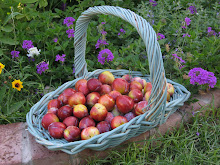
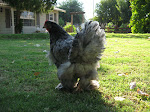
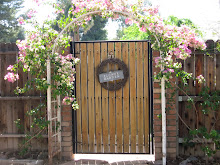


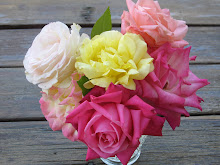

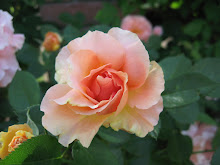




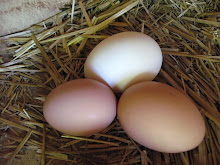

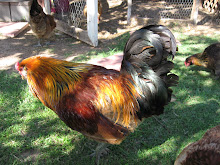
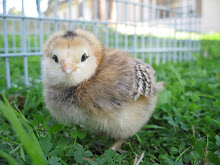
.jpg)








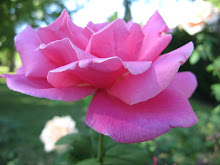
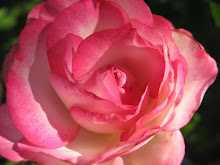
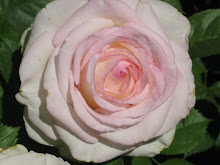
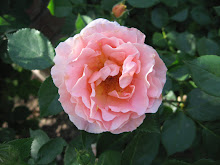
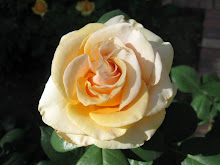
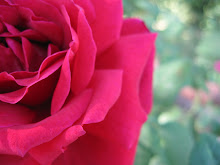

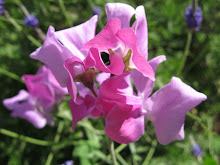
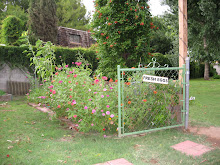

No comments:
Post a Comment